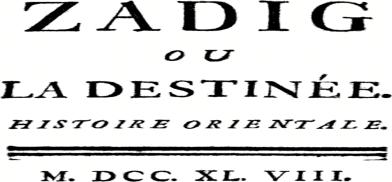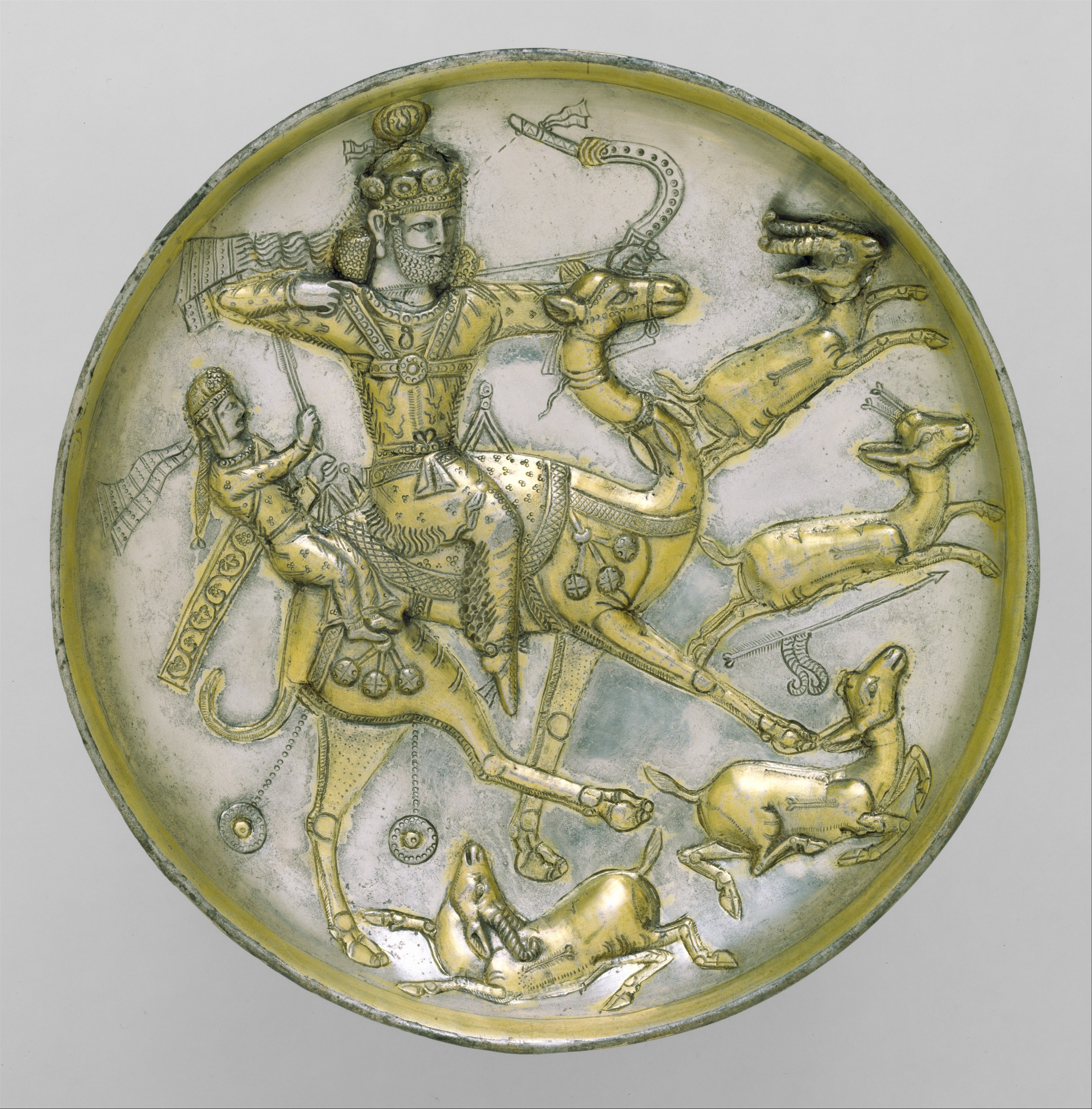‘Serendipity’ and its travelling tale - across Persia, Sri Lanka and India
This story is often said to have encouraged the introduction of the word ‘serendip’ into the English dictionary, marking January 28 to be remembered as the day when the word entered the dictionary.

Often great discoveries are made because of a serendipitous situation or observation. Oral traditions and narratives often speak of this. In the process often etymological significance is highlighted and one such example is the story of ‘The Three Princes of Serendip’.
This story is often said to have encouraged the introduction of the word ‘serendip’ into the English dictionary, marking January 28 to be remembered as the day when the word entered the dictionary. This is attributed to 1754, when it is critiqued to have initiated from the pen of British antiquarian, art historian and author Horace Walpole.
Interestingly, the story of ‘The Three Princes of Serendip’ seems to have travelled across a large section of Asia and Europe for nearly one thousand and three hundred years before it found its way into the English dictionary.
Here’s looking at the long journey of the Three Princes across Persia, Sri Lanka and India.

Persian and Indian origin
The story of ‘The Three Princes of Serendip’ seems to have both a possible Persian as well as Indian origin and both versions correspond to the same period. As interesting as the storyline is, the stories behind the same, in various countries is even more so.
The Persian version of the story of ‘The Three Princes of Serendip’ is said to speak of a possible time of the Persian king Bahram Gor. Also known as Bahram V (420 to 438), he was a Sasanian ruler, he was also referred to as a Shahenshah (king of kings).
On the other hand, the story from the Indian sub-continent is part of The Panchatantra tales of the Gupta rulers of the Indian subcontinent and is roughly said to have evolved across the 4th-6th century CE. This speaks of the mythical city of Mahilaropya which was ruled by king Sudarshan who had three sons - Bahusakti, Ugrasakti and Anantasakti.
Serendip's Lankan connection
With just a slight regional variation, it is important to also look at both storylines of ‘The Three Princes’. According to the story of the Three Princes, which is associated with Persian origin, there once lived a king in Serendip (corresponding to modern-day Sri Lanka), who had three sons. Once their education was complete, the king was satisfied to see that all three of them had grown into clever statesmen. The king further sent them towards Persia, and into a new and unsheltered education away from privilege. One day they managed to provide an extremely accurate answer to a stranger whose camel had got lost in a desert. In fact, their answer was so accurate that the stranger accused them of stealing his camel and reported it to the local emperor. However, the three princes explained that they provided the answer after keenly observing some camel tracks in the desert and deducing facts from them. Their answer pleased the king so well that the three princes were handsomely rewarded and appointed as advisers to the emperor and everyone lived happily ever after.
This Persian emperor was associated with Bahram Gor, who was very famous for his benevolent works, including the cancellation of taxes and public debt at celebratory events and also his encouragement of musicians. It is also important to add that this famous king is also mentioned in several other contemporary works of Persian literature, including, Firdausi’s ‘Shahnameh’ (Book of kings) (977-1010 CE), a protagonist in Nizami Ganjavi’s romantic ‘Haft Peykar’- also known as ‘Bahramnameh’ (1197 CE), ‘Hasht-Behesht’ (1302 CE) (‘Eight Paradises’) by Amir Khusru, who is also often critiqued to have given the name of ‘The Three Princes of Serendip’ and introduced the storyline to the rest of Europe. In the process, several French, Italian and German versions followed in centuries to come, e.g. the Italian version (inspired by Amir Khusru’s work), published in 1557 in Venice by Michele Tramezzino, titled- ‘Peregrinaggio di tre giovani figliuoli del re di Serendippo’. Tramezzino is supposed to have heard it from Cristoforo Armeno, an Italian who was a writer and translator of Middle eastern origin of the 16th century and translated the story from Persian into Italian, though later on, the existence of Cristoforo was also challenged (1932 by Richard Fick and Alfons Hilka).
One of the earliest German translations of the story was in 1583 by Wetzel. A few centuries later, several other German translations followed, including one in 1889 by Theodor Benfey.
A well-travelled storyline
On the other hand, the story of ‘The Panchatantra’, corresponds to the prologue of the book of the same name. The current literary form of ‘The Panchatantra’ is stated to belong to a time of the 4th- 6th century CE, though the stories are stated to be even older and could be as old as 200 BCE. The stories are often mentioned to have travelled across South and Southeast Asia as well as towards the west and Middle East through travellers and merchants. Thus, many of these stories are seen to resemble much regional folklore in several places across a large geographical area. Thus, it is also not surprising that the storyline of ‘The Three Princes’ also found a similar channel of reverberation.
However, to corroborate this exactly, one needs to analyse it further. Now let’s look at the storyline from the prologue of ‘The Panchatantra’. According to a recent English translation by Rohini Chowdhury (Penguin/Puffin, 2017), Vishnusharma created the Panchatantra stories to impart lessons to the three sons of king Sudarshan of the city of Mahilaropya. Sudarshan’s three sons - Bahusakti, Ugrasakti and Anantasakti - were lazy and foolish and had no desire to study. Sudarshan was worried to find a tutor who can deal with them. Finally, on the mention of one of his ministers, he finds the octogenarian Vishnusharma, supposedly an untrained, but excellent teacher. Vishnusharma educated the princes within half a year through many stories, which finally comprised ‘The Panchatantra’.
These were tales of practical wisdom and wit, which awakened a curiosity amidst the princes and they were intrigued to learn about many aspects of statesmanship as well as being an able and just ruler and also about facts of life, including good nature, honesty, truthfulness, amidst others. King Sudarshan was amazed to see the transformation among his sons and also tested his sons and they passed each test.
By the 18th century, the well-traveled storyline of ‘The Three Princes’ was already quite famous and mention can be found in some other works of the time, where it also found a mention, like the ‘Zadig’ (1747 and written between 1745-1747) of Voltaire, which has similar reference of the story in its Chapter 3, titled ‘The Dog and the Horse’. Finally, in the 18th century, the storyline was mentioned around 1754 by Horace Walpole, who is said to have ascribed the word ‘Serendipity’ to the English dictionary. Keeping to the storyline, Walpole proposed the word ‘Serendip’ to reflect “making discoveries, by accidents and sagacity, of things they were not in quest of…”. Today, the Oxford English Dictionary defines ‘serendipity’ as “the faculty of making happy and unexpected discoveries by accident.” Even at present and across popular culture, the story of ‘The Three Princes of Serendip’ continues to be famous as many movies (e.g. directed by Mark Cullingham-1968) and animations mention these from time to time.
Narratives flow across close proximities and thus stand as interesting sentinels to mark the gradual development of cultural symbols, and what greater joy than to discover the same through a set of stories or a simple storyline?
(The author is an Indian academic, author and columnist. Views are personal. She can be reached at lopamudramaitra@gmail.com)
Just wanted to say I love reading your blog and look forward to
all your posts! Carry on the superb work!
just use world wide web for that purpose, and get the hottest news.
While crypto trading is profitable, it can be highly pernicious to the traders if not done
properly. By proper means, one should do it with the right
set of tools and the right mindset. Time waits for no one and
the crypto exchage market is no exception. A plethora of cryptocurrencies,
advanced tools, market volatility, and trading strategies may all cause confusion to the new as well as expert traders.
Fortunately, technology has made it possible for
the traders to automate the exchage process including market analysis,
order execution, predicting market trends, and more.
Automated crypto trading is one of the best practices used by computer programs/trading bots to buy and sell cryptocurrencies.
These software tools are intended to react to market changes to trade at the right moment.
Traders can consider automate trading via the best crypto exchage platforms by making use of trading bots,
advanced orders, and more.
Automated trading
So, automated trading is a method of participating in crypto
or stock markets by using a program that executes pre-set rules for entering and exiting trades.
As the trader, you will combine thorough technical analysis with setting parameters for your positions,
such as orders to open, trailing stops, trailing stop loss orders, take profit, etc.
Automated trading methods enable you to carry out many or multiple trades in a small amount of time,
with the added benefit of taking the emotion out of your decisions.
That's because all the rules of the trade are already built into the
preset parameters. With some algorithms, the traders can even use the pre-determined
strategies to follow trends and trade accordingly.
Automated crypto trading relies on algorithms which
are actually the set of instructions used to solve computational issues.
In the crypto sphere, algorithms can trade digital assets on behalf
of the traders. And, the programs which use algorithms to trade are the bots.
The best platforms offer a variety of bots to the
traders which work based on preset conditions, signals, market analysis, and more.
Usually, trading bots use APIs that help traders to interact with multiple exchanges.
me of my previous room mate! He always kept talking about this.
I will forward this write-up to him. Fairly certain he will have a good read.
Many thanks for sharing!










Post a Comment